 |
|||||||
| home | features | exhibitions | interviews | profiles | webprojects | gazetteer | links | archive | forum | |||||||
|
|
|||||||
|
Women's work A BAIT debate at Hayle Town Hall
Images of work by Fran Cottell:
Reflections on the debate by Rebecca Weeks Delpha Hudson introduced the third of the BAIT lectures by explaining that the event was a response to the exciting ‘Women in the front room project’ at the Salt Gallery in Hayle, where in recent months the installation room has been dedicated to showing five female artist's works. Delpha welcomed artist Fran Cottell as the main speaker, and Judy Clark as invited guest, and outlined some initial questions. These were around the relationship gender now has to making art, and the importance of the term 'feminism'. These questions were intended to frame Fran's talk in relation to the broader discussion of the continuing relevance of feminism, and to be used as a catalyst for opening the debate to the floor. Fran began her talk by citing an article in the magazine ‘N.paradoxa’ in which she is discussed in terms of being a ‘social feminist’: a term which she saw first used by Kate Millet the feminist author. Fran went on to explain that this term implies an attitude that is governed by a woman’s approach to solving problems in the world. ‘Social feminism’ is a space of post-feminist empathy with the other that we have arrived at through a critical awareness of the white middle-class domination of the debate of difference, of the distance of feminism as a paradigm from the daily experience of women and from the body. Fran went on to describe how the lack of a unified front to feminism, following the necessary fracturing of the movement to allow for the diversity of human experience, has led to a perception of feminism as no longer relevant. This assertion is now being challenged as women’s groups spring up in colleges around the country and the debate about the importance of feminism is rejuvenated in a climate where women are aware of difference but also of the need to come together. Fran had put together a slide show of her work which began with her degree show at Reading University in 1977. She explained that her image making had involved much layering and scraping of paint and collage and that she had been influenced by the structuralist film makers around her at the time who were addressing what it meant to make film, in the same way she was attempting to deconstruct painting. Fran discussed her early work and the breaking point with it, with abstract painting as being about a quest for another way of making art and of seeing beyond the conditioning of a male dominated art history. She wanted to find a new way. Fran's quest led her to Greenham common and to the Womens Arts Alliance. After a period of questioning an experimental textile installation resulted, and she was surprised to be offered a chance to show it at the Whitechapel gallery. This kind of soft installation was highly experimental at this time. Following the show at Whitechapel Fran showed work with Marian Schoettle and the show was hosted by the Ikon gallery, who actually had to change their constitution to show the work, as it would have previously been defined as craft and not art by their constitution. Working in this way proved a good tactic, as it was new and exciting and was actually forcing institutions to evolve around it. Fran continued her slideshow illustrating her works development over the course of her career from fairly small textile installations in galleries to performance with specifically made garments and performance within installations in galleries and other contexts to an installation in her house in 2005 of a runway for the audience to use to move about her own home. I found it very interesting that Fran’s early work in the 80’s had forced an institution to re-think its definition of what constitutes art, and that they had had to allow that definition to include working with a medium that is traditionally the medium of women. This kind of direct confrontation of an institution's discrimination had paid off for Fran and the other people involved. Fran’s positive experience of using the label 'feminism' contrasted with the experience Judy Clark described of feeling that the term 'feminist artist' had limited her, and was a label that has overshadowed her work. Judy described having raised taboo issues through working with the body and its traces (eg menstruation) and that her work had been put into a feminist box where people did not have to look at it. As the audience joined the discussion it became apparent that the audience's experience of the feminist debate spanned the generations from the sixties through to the nineties and into the present, and this in itself represented some proof of the renewed interest in coming together to discuss feminism. Specific questions were raised by the audience such as what is Feminist content? And does the gender of the artist necessarily influence the work in some way? Some felt that work would explore gender and would reflect gender irrespective of the artists intent, where as others felt it was the artists intent that determined if the work was about gender or about feminist issues. The discussion turned to a comparison of the time that saw the birth of feminism with the present. The audience felt that the artworld now is fairly apolitical and is plagued by the cult of celebrity with no clear voice of critique or descent. The explanation offered by the audience for the past politicisation of female artists was that their experience of exclusion from the artworld had led to experimentation, action and persistence to find a voice for women. The audience suggested that the relative ease of life, the apparent equality of the sexes now has led to complacency. At this point I raised an issue which I feel is relevant to this kind of cross-generational discussion, which is that the feminist debate - and beyond that all political debate - is not as clear as it used to be. Within a post-modern perspective everything has to be considered against an awareness of globalisation, such that the resultant complexity makes discussion harder. I raised the idea that an artist might choose to use the terms ‘feminist art’ to acknowledge the body of great experimental work made by women, and to contextualise their practice in relation to the ways of working and languages evolved through that experimentation. Feminism has been and is being experienced by successive waves of women for the first time around the world. In this sense feminism is ongoing, it is continuing to develop and evolve in anything but a complacent fashion. I also feel its important to remember that although we in Western Europe are privileged in terms of equality between the sexes, the battles to be fought are not all out there in developing countries. There is still a pay gap between men and women in the U.K. Women still predominantly work in the lowest paid jobs and in part-time work. There is still not enough support for women and men to go back to work after children arrive or to choose to stay at home with children. There is still too much domestic violence and unprosecuted sexual assault: crimes which predominantly affect women. We don’t have to look beyond our own back yards to find reasons to take action. One has to be able to afford complacency. Maybe the question to ask is not why is contemporary art so de-politicised but rather why is it that the art we predominantly see in the media is so de-politicised? The audience answered this question for themselves by agreeing that art that disturbs is not popular within the art world. I would suggest that there is more than one artworld, more than one centre to satellite around and that we all have the power to seek those alternatives out. One lady who was there offered this sentence as a kind of art credo and call to arms: “Art should disturb the comfortable and comfort the disturbed”. There was something reassuring about that assertion. As the debate drew to a close it seemed possible that we are only now, in retrospect, able to view the achievements of feminism, its impact upon the practice of a generation of artists, their contribution to modern art and to begin to understand how we can claim that legacy as our own, as part of a continuing vibrant and necessary global debate. It was a pleasure to attend this debate, I left feeling genuinely encouraged that an actual discussion can be achieved when the debate is properly facilitated and the audience are encouraged to feel they can contribute something.
Images from Judy Clark's 1973 exhibition: 'Issues'
Organised by Delpha Hudson and Andy Whall of Art Surgery http://www.artsurgery.org
Please feel able to continue the debate on the forum: look for the 'editorial feedback' board
|





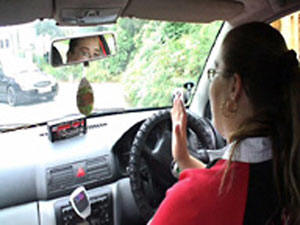

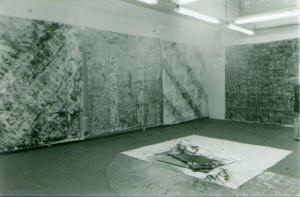

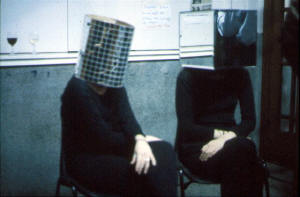


.jpg)
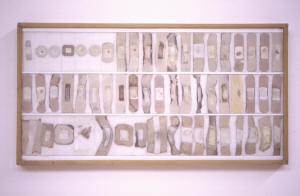
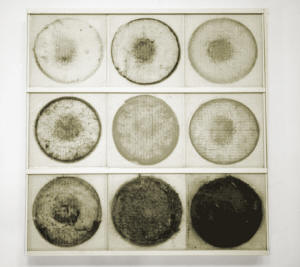
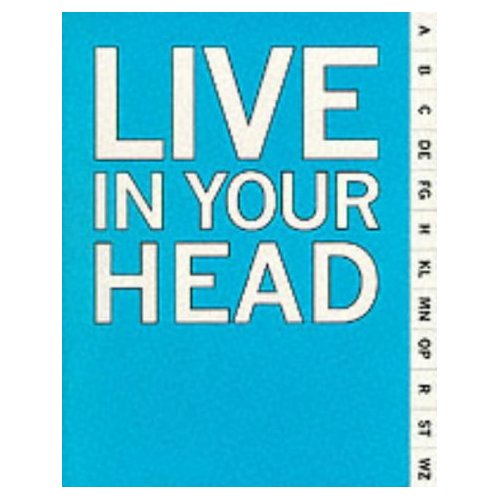 Judy
Clark's personal website is:
Judy
Clark's personal website is: